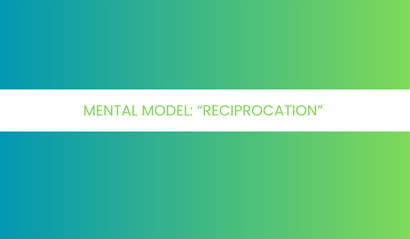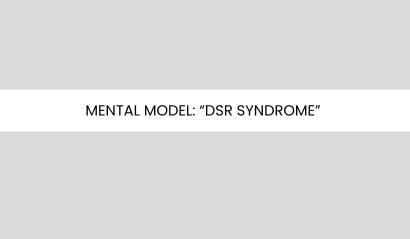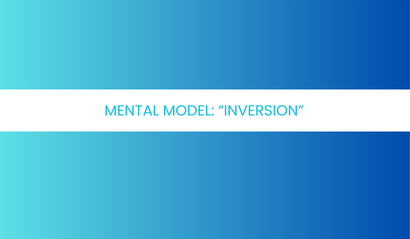Mental Model: Variable Reinforcement
In the realm of psychology and behavioral science, variable reinforcement is a phenomenon that has captivated researchers, marketers, and technology developers alike. This principle, which explains why certain behaviors become habit-forming or even addictive, is the reason we compulsively check our phones, gamble, or keep scrolling through social media. But where did this concept originate? How does it influence human behavior? And most importantly, how can we recognize and mitigate its impact on our lives? Let’s dive into the fascinating world of variable reinforcement.
The Origins of Variable Reinforcement
The concept of variable reinforcement traces its roots back to the work of the famous psychologist B.F. Skinner, who is widely known for his research in operant conditioning. Skinner’s experiments in the 1940s involved training pigeons and rats using different reward schedules. His studies revealed that animals (and humans) respond most strongly to reinforcement schedules that are unpredictable, leading to sustained engagement in a particular behavior.
Skinner’s Skinner Box experiments demonstrated that when rewards were given at random intervals (instead of fixed ones), the subjects became more persistent in their actions. This discovery laid the foundation for what we now call variable-ratio reinforcement schedules, a principle that plays a crucial role in gambling, gaming, and social media engagement today.
Understanding Variable Reinforcement
Variable reinforcement (also known as intermittent reinforcement) is a type of conditioning where rewards are given at unpredictable intervals. Unlike fixed reinforcement (where a reward is received after a predictable action or time frame), variable reinforcement keeps the subject engaged because they never know when the next reward is coming.
There are four main types of reinforcement schedules in behavioral psychology:
- Fixed Ratio: Reward is given after a set number of responses. (e.g., a coffee shop loyalty card where the 10th coffee is free.)
- Fixed Interval: Reward is given after a fixed amount of time. (e.g., a weekly paycheck.)
- Variable Ratio: Reward is given after an unpredictable number of responses. (e.g., slot machines at a casino.)
- Variable Interval: Reward is given after an unpredictable amount of time. (e.g., checking for likes on a social media post.)
Of these, variable ratio reinforcement is the most powerful and addictive, as it encourages repeated behaviors in hopes of receiving a reward.
Real-World Examples of Variable Reinforcement
1. Social Media and Smartphone Usage
Social media platforms like Instagram, Facebook, and TikTok use variable reinforcement to keep users engaged. Each time you open the app, you don’t know if you’ll see a new like, comment, or notification. This unpredictability keeps you coming back for more.
2. Gambling and Slot Machines
Casinos are built on the concept of variable reinforcement. Slot machines don’t pay out every time, but when they do, it’s unpredictable. This uncertainty is what keeps gamblers hooked, as they believe the next pull of the lever could be the big win.
3. Video Games and Loot Boxes
Many video games incorporate variable reinforcement through loot boxes, randomized rewards, or achievements. Players don’t know when they’ll receive a rare item, which makes them more likely to keep playing (or spending money).
4. Email and Messaging Apps
Checking emails or messages follows a variable interval reinforcement schedule. You might get an important email or a message from a friend—or you might not. The uncertainty encourages compulsive checking.
5. Dating Apps (Tinder, Bumble, etc.)
Dating apps operate on a variable reinforcement system as well. Every swipe could lead to a match—or nothing at all. This unpredictable reward mechanism keeps users swiping longer.
The Dark Side of Variable Reinforcement
While variable reinforcement can be used positively (such as in education or habit-building), it has a dark side. Many industries exploit this psychological principle to make their products addictive, leading to problems like:
- Smartphone addiction – People constantly check their phones for notifications.
- Gambling addiction – Players chase losses due to unpredictable rewards.
- Productivity loss – People waste hours scrolling through social media.
- Mental health issues – Dopamine-driven reinforcement can lead to anxiety and depression.
How to Avoid Falling into the Variable Reinforcement Trap
Recognizing the impact of variable reinforcement is the first step toward reducing its influence in your life. Here are some ways to mitigate its effects:
1. Set Boundaries with Technology
- Turn off unnecessary notifications to reduce random reinforcement.
- Set specific times for checking emails and social media rather than doing it constantly.
- Use apps that track screen time to limit excessive usage.
2. Develop Awareness
- Understand how companies design products to exploit variable reinforcement.
- Recognize your own behavior patterns—are you checking your phone out of habit or necessity?
3. Use Fixed Reinforcement for Positive Habits
- Instead of relying on unpredictable rewards, use fixed rewards to reinforce good behaviors. For example, reward yourself for completing a workout after a set number of sessions.
4. Engage in Mindfulness Practices
- Practicing mindfulness and meditation can help you become more conscious of impulsive behaviors.
- Journaling about your daily habits can make you more aware of compulsive tendencies.
5. Reduce Exposure to Addictive Environments
- Avoid excessive time in casinos, mobile gaming, and social media platforms designed to keep you hooked.
- Replace variable reinforcement behaviors with structured, rewarding activities like reading, exercise, or learning a new skill.
Conclusion
Variable reinforcement is a powerful psychological principle that influences much of our daily behavior. While it has been used to make experiences engaging and fun, it can also lead to addiction and negative mental health outcomes. By understanding how variable reinforcement works and implementing strategies to minimize its impact, we can take back control of our habits and make more intentional choices in our lives.
The next time you find yourself mindlessly refreshing your social media feed or waiting for that next “hit” of dopamine, ask yourself: Is this truly serving me, or am I just caught in a loop of unpredictable rewards? Recognizing this pattern is the first step to breaking free from its grasp.







